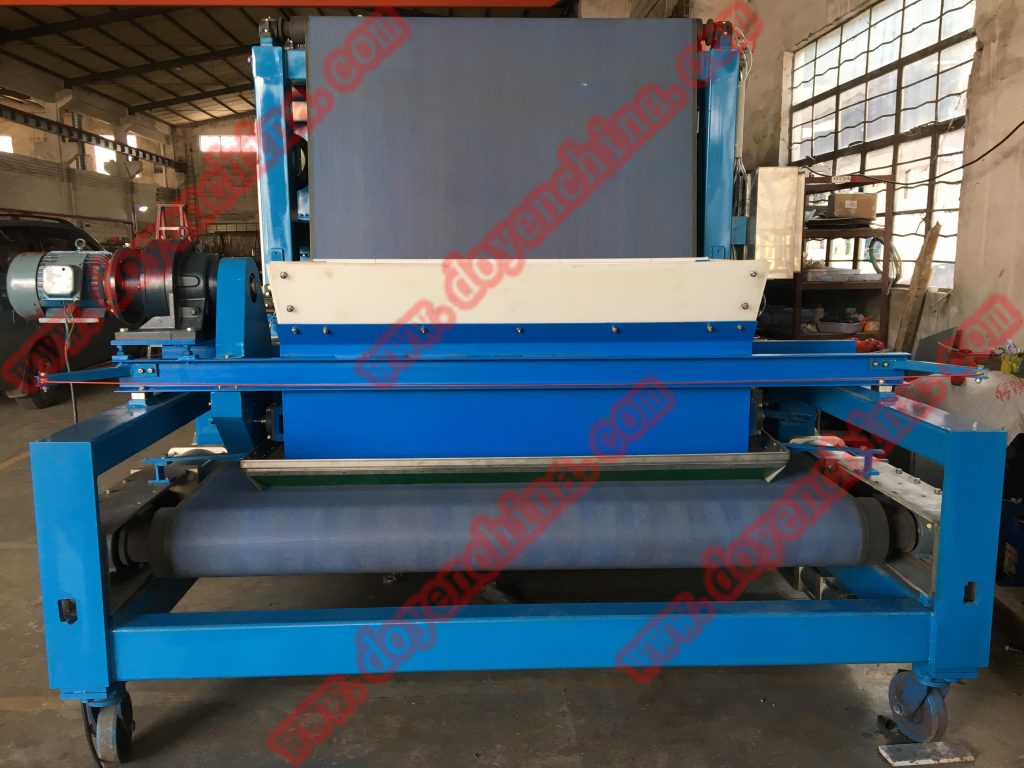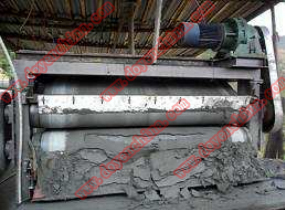

Tel:
+86-757-8633-0278
Email:doyen@doyenchina.com
Fax:+86-757-86287390
Address:Room 201, Building No. 24, Yicui Rose Garden, No. 2, Jihua 7 Road, Chancheng District, Foshan City, Guangdong Province, China 528000.
The moisture content of the remaining sludge discharged from the sewage treatment plant is generally around 95% -99%. It is necessary to use a thickening tank or a thickener to reduce the moisture content to below 97% before the belt filter press can be used for dehydration. Because the nitrogen and phosphorus in the sludge are easily re-dissolved into the sewage when the thickening tank is used for thickening, it is more inclined to use mechanical equipment such as a belt thickening filter press.
The water in the sludge can be divided into external water and internal water according to its existence form. The external water includes pore water, attached water, capillary water, adsorption
water. The pore water that accounts for 70% to 80% of the sludge moisture can be separated by a belt thickener. The strong binding force between attached water (water film on the surface of sludge particles) and capillary water (10%-22%) and sludge particles requires the use of external forces such as belt filter press for squeezing and separation. Adsorbed water (5%-8%, including internal water) usually can only be removed by drying or incineration.

The belt-type thickening and dewatering integrated filter press equipment is composed of a belt-type thickener and a belt-type filter press in series to treat sludge with a moisture content of >99%. The working principle of the belt thickener: the sludge and chemical flocculation agent are fully mixed through the mixer, and after further reaction in the maturation box that comes with the thickener, they are distributed on the gravity dehydration table of the thickener, and the sludge water is used by gravity. Seepage down through the mesh belt. The sludge solids are trapped on the mesh belt and discharged separately. The belt thickener is mainly composed of a maturing box, a gravity dewatering table, an adjustable mud rake, a mud dam, a mud discharge port, and a drainage pipe. The volume of the sludge after concentration is 1/10 to 1/4 of the original.

For the integrated equipment in the sludge dewatering process, there is no need to add flocculant twice. In order to increase the processing capacity of the subsequent belt filter press, the sludge should be fully concentrated, but the solid content of the concentrated sludge should not exceed 8%, otherwise it is not easy to evenly distribute on the gravity section of the filter press. Generally, the solid content of the thickened sludge should be 3% to 6%.
Belt filter press is generally composed of four zones: gravity dehydration zone, pre-press filter zone, low pressure filter zone and filter press zone. The concentrated flocculated sludge is evenly distributed on the gravity dewatering table, and the sludge water is effectively released by gravity, so that the sludge loses fluidity and enters the pre-dewatering zone. In the pre-dewatering zone, the two mesh belts gradually come together and begin to put pressure on the sludge and slowly increase, thereby building a good sludge pressing structure. In the low pressure area, the mud cake is sandwiched between the mesh belt by a large diameter roller and wound on the roller with a larger contact angle, so that the pressure is gently increased. In the filter press area, multiple rollers are arranged in an S shape, so that the two mesh belts sandwich the mud cake in an S shape and are continuously rolled. At the mud unloading port, the mesh belt is opened, and the mud cake is discharged from the mud discharge port, and the solid content of the mud cake is >20%.
The purpose of adding a thickener to the belt filter press is to extend the residence time of the sludge on the gravity dewatering table, thereby increasing the overall hydraulic load processing capacity of the dewatering machine. The longer the dewatering table, the longer the sludge residence time, and the freeness of the filter. The more water, the greater the hydraulic load handling capacity. In general, the effective length of the gravity dewatering table of the thickener in the integrated thickening and dewatering machine is 1 to 3 m, and the length of the gravity section of the filter press is 3 to 4 m, that is, the total length of the gravity dewatering table is 4 to 7 m. For example, CASCADE sludge thickening and dewatering integrated machine, the effective length of the gravity section of the thickener is about 2.5 m, and the effective length of the gravity section of the filter press is 4 m. The thickening and dewatering integrated machine of Guoyi Light Industry can process the remaining sludge with the moisture content of 99%~99.7%, and the moisture content of the dewatered mud cake is about 80%, which depends on the type of sludge. The moisture content of the sludge dewatering is also different.

Doyen specializes in providing belt press equipment for the Southeast Asian market. Welcome to visit our workshop and formulate a more scientific plan based on the actual situation of your company. Welcome to visit joyce@doyenchina.com or visit https://www.doyenchina.com.
Dec-30-2020
admin

 +86-757-8633-0278
+86-757-8633-0278 doyen@doyenchina.com
doyen@doyenchina.com Sitemap
Sitemap